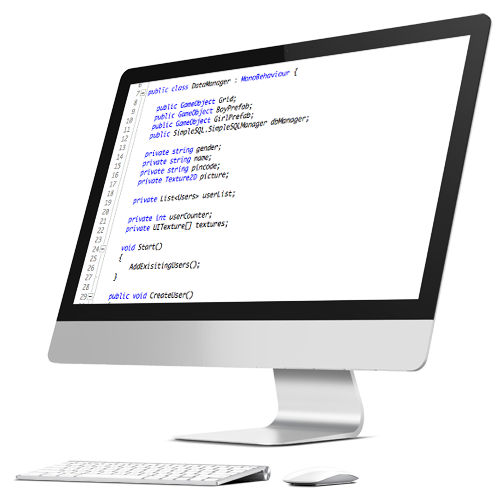Writing the code for a medical app is a task for specialists (who tend to over-use abbreviations, so keeping up with them can be hard!). Depending on the used platform (iOS or Android), either Objective-C or Java, respectively, are used. Creating a ‘web-app’ is another option, in this case the used programming languages are HTML, Javascript and CSS.
Two software development methods
There are two main software development processes: the ‘waterfall’ and the ‘agile’ methods. With the waterfall method, a blueprint of the app is made in which all functionalities, screen build-up and the underlying technology is described. The developers will disappear into their cocoons for several weeks and only reappear once they have a first presentable version; often this is the beta version. This version then gets tested by the customer, after which some adjustments are made and we end up with a first formal version. The customer’s involvement in the nitty-gritty of this programming phase is minimal.
The ‘agile development’ method focuses much more on a detailed step-by-step production process. Every time a small milestone is achieved, the app is produced as it stands at that moment and gets tested. Agile development can also be carried out using the SCRUM method.
Synappz Mobile Health uses both above described methods. They are both equally good; the best method is entirely dependent on what the client’s requirements are for the project. Many of today’s developers go with the Agile method, and we also believe that it’s a great way to write high-quality apps. However, the method can be perceived as quite burdensome and time consuming for the client; imagine a new version is produced every week and it can only be taken to the next level once the client has viewed, tested and approved it. The client may simply not have the time for such intense focus, and we therefore always choose the most appropriate development method on a case-by-case basis.
CE-certification
This stage is not limited to just encoding. It is also used to write up the technical file if CE certification is necessary. Eventual marketing campaigns will also be hatched out during this stage (website, video, preparing social media).
Testing the app
And last but not least, no app goes out the door without having been thoroughly tested first. Naturally, we use the standard Apple and Google ‘stress tests’, but we also conduct user tests. Together with the customer we will decide to which degree we can be of service for the testing stage; we would be more than happy to mobilize our extensive network in the health care sector for this purpose.


